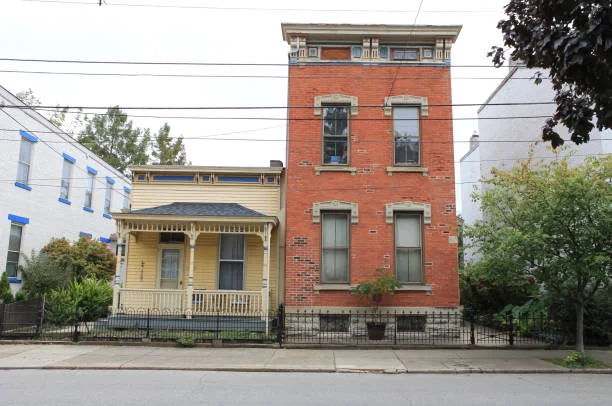Cincinnati is a city known for its charm, history, and beautifully aged homes. From the iconic Italianate architecture in Over-the-Rhine to the craftsman-style bungalows scattered across neighborhoods like Hyde Park and Northside, older properties give the Queen City its unmistakable character. But when it comes time to sell one of these homes, their age—while charming—can also present a unique set of challenges.
Unlike newer builds, older homes come with quirks, character, and often, a laundry list of maintenance issues that may catch potential buyers off guard. If you’re a homeowner in Cincinnati considering selling an older property, understanding the specific dynamics of your market, buyer expectations, and what steps to take can make all the difference in a smooth and successful sale.
Understanding the Market for Older Homes
Not all buyers are looking for a modern, turnkey house with the latest finishes. In fact, many buyers in Cincinnati are drawn to older homes precisely because of their character—arched doorways, original hardwood floors, stained glass windows, and built-ins that you simply don’t find in new construction. That said, this appreciation for charm is typically paired with concerns about upkeep, functionality, and long-term costs.
Buyers will want to know how well the home has been maintained. They’ll ask about the age of the roof, the condition of the foundation, the state of the plumbing and electrical systems, and whether the HVAC is nearing the end of its life. A home with outdated infrastructure—even if it looks great—can make cautious buyers hesitant or give them leverage to negotiate your price down significantly.
This means transparency is essential. The more upfront you can be about your home’s age-related issues, the more confident buyers will feel. Getting a pre-inspection before listing can help you stay ahead of surprises and give you a realistic view of how your home might be perceived in the current market.
Still curious? Here’s another read we think you’ll love.
Cosmetic Updates Versus Structural Investments
One of the biggest decisions homeowners face when selling an older property is whether to invest in updates before listing. A common misconception is that you need to pour thousands into full renovations to attract a buyer. But the reality is more nuanced.
Cosmetic updates—like fresh paint, updated lighting, or refinished floors—can enhance the visual appeal and create a strong first impression. These relatively inexpensive improvements help the home feel cared for, even if the bones are original.
On the other hand, major upgrades—like replacing knob-and-tube wiring, resolving foundation issues, or updating a century-old plumbing system—can be costly and may not always offer a full return on investment. That’s especially true if you’re selling on a short timeline or simply want to avoid pouring money into a property you’re ready to part with.
That’s where alternative options can come into play. H3 Homebuyers offers Cincinnati homeowners the option to sell older properties as-is, without worrying about repairs or staging. This can be a particularly smart route if your home needs significant work, you’re in a time crunch, or you’d prefer to skip the long negotiation process that often comes with traditional buyers who expect everything to be updated.
By working with buyers who specialize in older homes, you can avoid the uncertainty of the open market and still walk away with a fair deal—sometimes within just a few days.
Highlighting the Right Features
While older homes come with their share of upkeep, they also offer features that are increasingly rare and valuable. Solid wood doors, original trim, brick fireplaces, transom windows, and clawfoot tubs can all be powerful selling points when framed the right way.
If your home has historic charm, lean into it. Rather than apologizing for the age of the property, celebrate the craftsmanship and materials that have stood the test of time. Modern buyers may not mind the quirks of an older house if it comes with a sense of authenticity and warmth.
That said, balancing history with practicality is key. A beautiful old home that also has updated windows, a functional kitchen, or improved insulation can be much more appealing than one that’s stuck in the past. Even small upgrades—like replacing drafty doors or adding modern lighting—can show buyers that the home has been thoughtfully cared for, even if it hasn’t been fully modernized.
Navigating Appraisals and Financing
Selling an older home in Cincinnati can sometimes get complicated during the appraisal and financing stages. If your buyer is using a conventional mortgage, the lender may flag certain issues uncovered during inspection—like outdated wiring, peeling lead-based paint, or a roof near the end of its lifespan.
FHA and VA loans can be even stricter, requiring repairs before the loan is approved. This can delay closing or even derail the sale entirely if you’re not prepared.
To avoid this, consider speaking with your agent or a local homebuyer experienced in these scenarios. They can help you understand how your home might be viewed by lenders and what, if any, repairs are worth making in advance. In some cases, accepting a cash offer—like those from buyers who specialize in older properties—can help bypass the traditional financing hurdles altogether.
Timing and Seasonality Matter
Like all real estate, timing your sale strategically can improve your outcome. In Cincinnati, the spring and early summer months tend to bring the most active buyers to the market. Homes that show well—especially those with great curb appeal and seasonal landscaping—can capture more attention during this time.
Older homes tend to shine in these seasons because buyers are more willing to explore unique options when they’re not rushed or overwhelmed by poor weather. That said, Cincinnati’s market has remained relatively steady year-round, and motivated buyers will still come to the table in the fall or winter—especially if inventory is low.
Ultimately, the key is preparation. Whether you’re listing with an agent, selling independently, or working with a local buyer, having a clear understanding of your home’s strengths, potential issues, and the mindset of your target buyer will help guide your next steps.
Final Thoughts
Selling an older home in Cincinnati requires a bit more planning and honesty—but it also comes with unique rewards. With the right strategy, you can position your property in a way that highlights its character while addressing the concerns that might arise from its age.
From knowing what repairs are worth the investment to understanding your selling options, being informed is your best asset. And for homeowners who want to skip the long process entirely, working with trusted local buyers who understand older homes can be a valuable path.
Cincinnati’s history lives in its homes—and your property might just be someone else’s dream waiting to be discovered.
You’ll find even more guides and resources on 2A Magazine.







